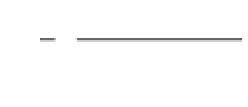Graphics Reference
In-Depth Information
Figure 6.24.
Circles of fixed radius tangent to two circles.
2
2
(
)
(
)
AB
rr
+
-+
r r
AB
AB
1
2
=
(
)
(
)
e
=
+
,
u
=
u
,
u
,
and
v
=-
u
,
u
.
12
21
2
2
AB
Proof.
We can see from Figure 6.24(a) that there are precisely two circles of radius
r which are tangent to both circles. What we have to do is find the intersection of
two circles: one has center
A
and radius r
1
+ r and the other has center
B
and radius
r
2
+ r.
We switch to the coordinate system defined by the frame (
A
,
u
,
v
). Let
A
= (0,0) and
B
= (b,0). See Figure 6.24(b). We must solve the equations
2
2
2
(
)
xy rr
+=+
1
2
2
(
)
2
(
)
.
xb
-
+=+
y
r r
2
We get that
2
2
(
)
(
)
brr
+
-+
rr
1
2
x
=+
2
2
b
2
(
)
2
.
y
=±
r
+
r
-
x
1
This translates to the desired formula in world coordinates since b corresponds to
|
AB
|.
This concludes our list of formulas involving circles. Other formulas can be found
in [Chas78] and [BowW83].
6.9
Parametric or Implicit: Which Is Better?
Two of the most common ways to present a geometric object
X
is via a parameteri-
zation or implicitly as the zeros of an equation. It is natural to ask which is better.
The advantages and disadvantages of these two representations are seen best in the
context of the following two tasks:



